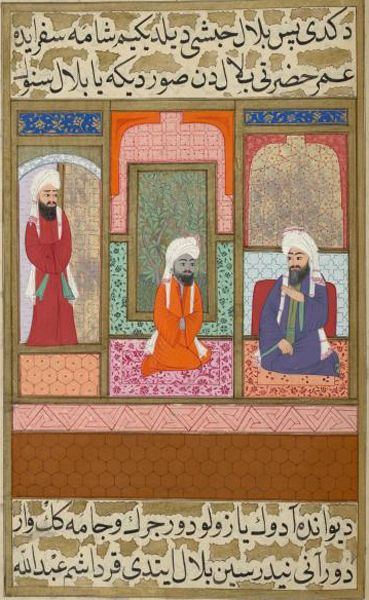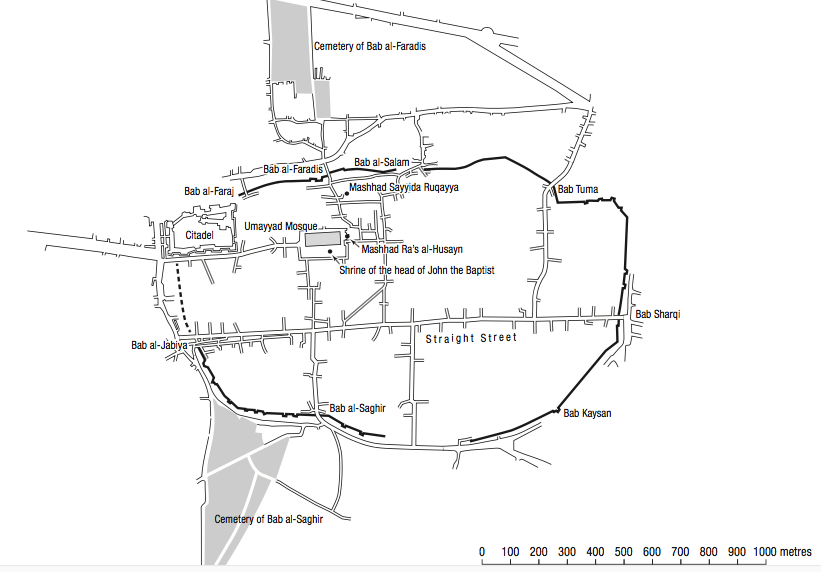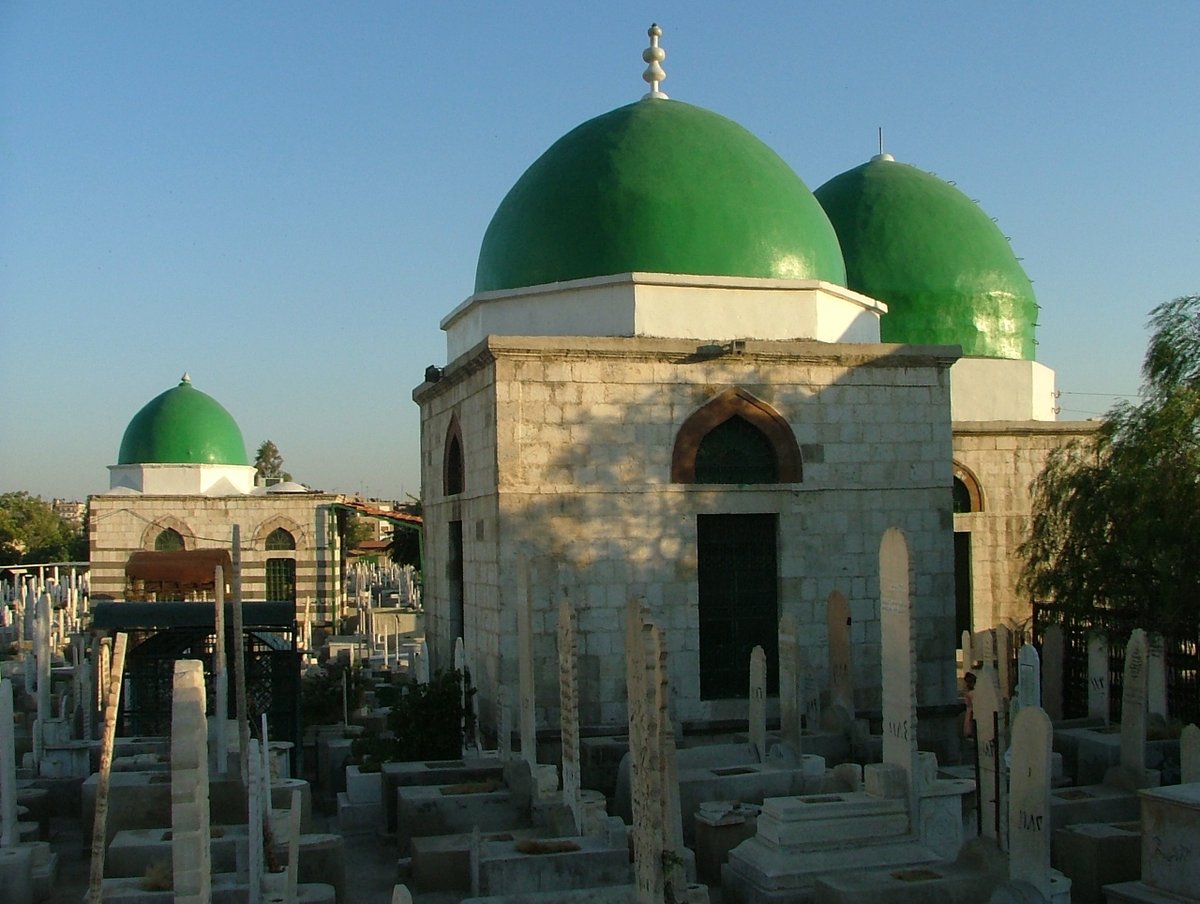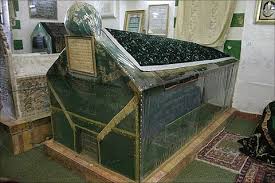Today I& #39;m answering your questions. It& #39;s also the third day of protests in Austin, TX in response to the killing of George Floyd by police, and it feels wrong not to acknowledge those fighting for justice.
A thread on the tomb of Bilāl al-Habashī in Damascus. https://twitter.com/PaulaManstetten/status/1264970432027004928">https://twitter.com/PaulaMans...
A thread on the tomb of Bilāl al-Habashī in Damascus. https://twitter.com/PaulaManstetten/status/1264970432027004928">https://twitter.com/PaulaMans...
First, let me say I& #39;m not at all an expert in race in the medieval Islamic world. For that, I& #39;ll point you to the work of a previous @Tweetistorian, @RachelSchine: this thread is especially rich, with suggestions for further reading. https://twitter.com/Tweetistorian/status/1187055091309637632">https://twitter.com/Tweetisto...
And @DrWorsTen& #39;s thread today @HistorianofIran is a reminder of how one black Muslim resident of Damascus fought for justice in the Mamluk period. Bilāl represents another black Muslim who whose history and memory is linked with the city of Damascus. https://twitter.com/HistorianofIran/status/1267047458657443840">https://twitter.com/Historian...
Bilāl Ibn Rabāḥ, known as Bilāl al-Habashī (Bilāl the Abyssinian) was the first muezzin of Islam and one of the Sahaba or close companions of the prophet Muhammad. He& #39;s a much-beloved figure in Islam.
Siyar-i Nebi (Life of the Prophet) 1594, @nypl Spencer Collection
Siyar-i Nebi (Life of the Prophet) 1594, @nypl Spencer Collection
In fact, Bilāl& #39;s life is remembered as a triumph over injustice. A former slave, he was one of the earliest converts to Islam and was chosen by Muhammad to become the first reciter of the Adhan (call to prayer) Here& #39;s the scene in the 1976 film The Message https://www.youtube.com/watch?v=IwoM64-a4rg">https://www.youtube.com/watch...
Bilāl& #39;s tomb in Damascus is in the ancient cemetery of Bāb al-Saghīr south of the city, near a group of tombs for the Prophet& #39;s family (Ahl al-Bayt). It& #39;s believed that after the Battle of Karbala in 680, prisoners were brought back to Damascus, capital of the Umayyad Caliphate.
The tombs of Ahl-al-Bayt in the cemetery are numerous but modest compared to others in Syria - yet we know from the 11th c. medieval author al-Raba& #39;i, who gives us the earliest textual reference to Bilal’s tomb, that they have long been beloved sites of ziyāra (pious visitation).
Bilāl was not one of the Ahl al-Bayt, but nevertheless, there& #39;s a long tradition of Sunnis and Shi& #39;is venerating him among their graves in Damascus. For example, two 13th-century authors, Ibn & #39;Asākir and Ibn Jubayr, mention Bilāl& #39;s tomb among the important ziyarāt in Damascus.
It& #39;s unlikely Bilāl ever visited Damascus, let alone died there, but from the medieval era onward, people certainly believed he did. By the way, if the idea of shared sites of ziyāra or visitation is new to you, I wrote about this in my thread on Monday. https://twitter.com/Tweetistorian/status/1265079904841981963">https://twitter.com/Tweetisto...
My analysis of the building& #39;s structure, ornament, and building history indicates that the mausoleum dated at least to the Ayyubid period, confirming the evidence of the textual sources.
But inside the mausoleum is the epigraphic grave marker of Bilāl himself, and that is much older. In fact, Bilāl& #39;s epigraph, which dates to the 11th c., is the 2nd-oldest inscription in the cemetery, and the 3rd-oldest Arabic inscription in Damascus. It& #39;s nearly 1,000 years old.
The epigraphic panel is placed at the foot of Bilāl& #39;s large cenotaph, which is at the center of the mausoleum. It reads:
Bismillah al-raḥmān al-raḥīm
This is the tomb (qabr) of Bilāl ibn
Hamama the mu& #39;adhdhin of the Messenger of God.
May God bless him and be pleased with him.
Bismillah al-raḥmān al-raḥīm
This is the tomb (qabr) of Bilāl ibn
Hamama the mu& #39;adhdhin of the Messenger of God.
May God bless him and be pleased with him.
As mentioned above the mausoleum was restored several times, including in the Ayyubid period. But the shrine& #39;s most illustrious patron was another black Muslim. He restored the building in the Ottoman period, and left this inscription panel above the entrance to the tomb chamber.
It reads: "This noble dome (al-qubbat al-sharīfa) was renovated by & #39;Uthman, agha dār al-sa& #39;āda bi-l-bāb al-& #39;ālī in the year 1007 of the hijra of the Prophet (1598)"
Here we find a very interesting patron indeed. & #39;Uthman (Osman) Agha was the Agha dār al-sa& #39;āda, or Chief Black Eunuch in charge of the harem at the Topkapı Palace in Istanbul. He was also the first eunuch entrusted with supervision of the royal waqfs (pious endowments).
He was the slave of Safıye, a noblewoman from Venice captured by corsairs and then brought to the imperial harem. Famous for her beauty, she became the chief consort of the Sultan Murad III (1574–95) and Valide Sultan after the birth of her son Mehmed. https://en.wikipedia.org/wiki/Safiye_Sultan_(wife_of_Murad_III)">https://en.wikipedia.org/wiki/Safi...
Osman Agha was thus one of the most highly-placed officials in the Ottoman Empire, a powerful and successful man whose origins as a black slave perhaps made his patronage of the shrine for the Ethiopian freedman Bilāl in Damascus particularly meaningful.
Both Bilāl and Osman Agha are remarkable figures who managed to challenge and transcend the expectations of their time. That their stories intersected in Damascus, in this small mausoleum, is surely no accident. It& #39;s a story of one black man remembering another, across centuries.
@PaulaManstetten - I hope you don& #39;t mind that I didn& #39;t quite answer your question. Perhaps I& #39;ll do another thread on traipsing around Syria with al-Harawī& #39;s pilgrimage guide for you next week! For now, I& #39;m signing off, and thank you for spending the week with me @Tweetistorian.
Oh - one last note - there was an animated film made about Bilal a couple of years ago. I haven& #39;t watched it, so can& #39;t give thumbs up or down, but if you have, would love to hear your thoughts! https://www.youtube.com/watch?v=VhrZBHwOMUs">https://www.youtube.com/watch...

 Read on Twitter
Read on Twitter









